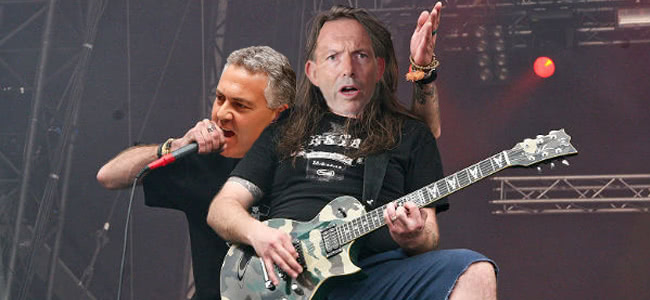As Tone Deaf reported yesterday, the Federal Government has raised some eyebrows in the Australian music community. A new government website, which aims to explain the 2015 Budget to small business owners, features the example of ‘Stephanie’, a young musician who earns $300,065 a year.
After social media got ahold of a screenshot of the example, ‘Stephanie’ went viral, with musicians, music fans, and industry professionals from around the country citing it as an example of how out of touch the Abbott government is with independent musicians in Australia.
Just for context, another example featuring Paul, a fellow small business owner who runs his own bakery, cites his income as being just $35,460 per year. This is considerably less than Stephanie, who “performs in a band that she runs as a small sole trader”.
If the site’s figure is indeed accurate (it isn’t), your average musician in Australia is pulling in more money than an MP. According to a 2013 report by News Limited, Australian federal backbenchers take home $195,130, while professional AFL players pull in about $251,559.
We all know that musicians, particularly independent musicians, aren’t earning anything close to the six-figure income Stephanie is raking in, so how much are our homegrown musicians earning? What is the financial reality of being a musician in Australia?
Well, according to a survey of Australian musicians conducted by the Australian Music Industry Network (AMIN), which acts as a representative body for musicians in Australia, many musicians actually end up going into the red for their careers.
Of the musicians surveyed by AMIN who receive some kind of income from performing, most earned either $50 – $200 monthly before tax or $200 – $500 monthly before tax. On average, members were earning $1,000 – $5,000 monthly before tax from other hobbies or paid employment.
Despite earning a meagre income from their music, most musos are still contributing $150 towards their careers. Just 4 percent of respondents indicated they contribute nothing at all towards their music careers. So most musicians in Australia are actually spending money on their music careers.
Meanwhile, a 2011 report by Ernst & Young claimed the average income for a professional musician today falls somewhere between $7,000 and $12,000 per year, not quite the handsome sums that Stephanie is apparently taking in.
When Melbourne comedian Luke Ryan tweeted at the Australian Tax Office (ATO) to question the ‘Stephanie’ example, they claimed the issue would be best raised with the Treasury, adding, “However in 2012-13, 85 Music Professionals had income over $180K.”
“Musicians and music fans cited it as an example of how out of touch the Abbott government is with independent musicians in Australia.”The ATO also provided Ryan with a link to a page of taxation statistics, including details of every tax return filed for the 2012-13 financial year. This was done, presumably, as a way to prove that the example of ‘Stephanie’ is not as farfetched as it sounds.
However, taking a look at the ATO’s own spreadsheet, only 5,300 people listed “music professional” as their primary source of income for that year. This included 1,250 people who claimed earnings below the tax-free threshold of $18,200.
“Music professionals”, as they’re referred to in the breakdown, typically reported incomes of between $37,001 and $80,000, with only 85 tax returns citing incomes of more than $180,000 for the period in question.
However, it’s also worth noting, as John Barrington of Canberra punk band Super Best Friends, who wrote about the government’s site for FasterLouder, did that a “music professional” is not necessarily a musician, but would also refer to promoters and other music business roles.
To illustrate just how fanciful the government’s ideas of how Aussie musicians are doing financially, Valve Records have broken down the $300,065 figure on their Facebook page. According to the label, for a three-piece to generate such an income per member would require an overall income of $1.2-1.4 million.
“This takes into account various commissions payable and operating costs involved (everything from travel, production, crew to promotion etc etc). If you have a local artist charging $50 for a sold out 1000 capacity show they will potentially net approx $40,000 minus venue hire costs and GST,” they write.
[include_post id=”453709″]
“So on this basis a band would have to be playing anywhere between 30-35 sold out shows (and a few festivals thrown in) of this scale annually – to give that some perspective there are maybe 5-6 major cities where there would be the greater likelihood of this.”
“Okay, this basic breakdown doesn’t include other revenue streams such as merch, publishing and record sales (negligible for many).”
That said, not completely out of the question depending where a band is in the scheme of things and how big their shows are, but you could pretty well say this is the providence of a handful of bands here each year. It is also a level that becomes harder to maintain in regard to long term audience interest.”
Another article about this detached distortion of music economy facts… for a 3 person band to generate a taxable…
Posted by Valve Records on Monday, July 13, 2015

































